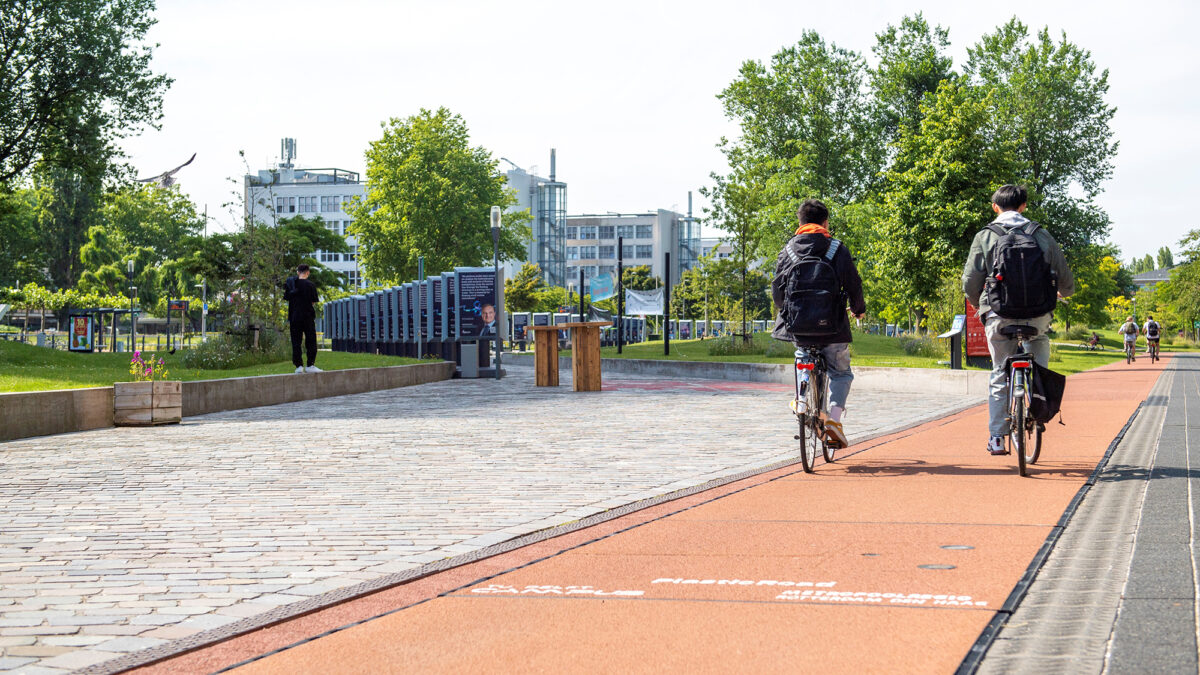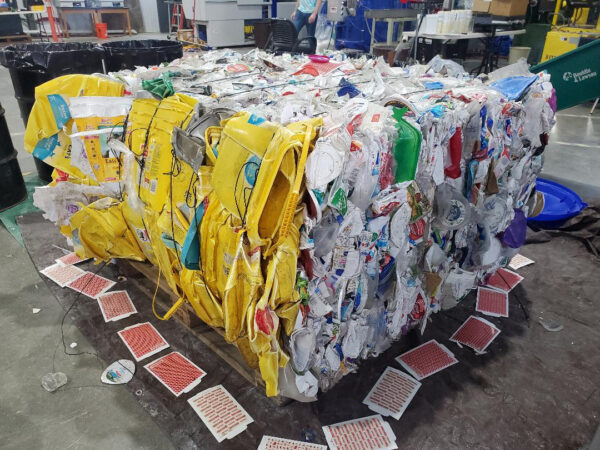Infrastructure Could Play a Big Role in Boosting Plastics Recycling

Improvements in PCR supply and end-use standards could keep more plastics waste from landfills
Infrastructure is an evolving market for recycling, with the potential to divert a considerable amount of plastics waste from landfills and incineration and into roads, asphalt, drainage pipes, mass transit routes and other applications. Demand for post-consumer recycled (PCR) plastics here could create markets for the materials and provide opportunities for companies that collect, process and supply them.
At the same time, there are challenges. Among them is the ability to qualify PCR materials as being of consistent quality and beneficial for infrastructure; establishing effective collection and recycling networks that maintain a supply of reliable material; passing supportive state laws and regulations that promote recycled plastics for infrastructure; selling consumers and businesses on better collection and reuse of waste plastics; and designing polymers and products that can be broken down and converted easily into viable PCR materials.
These are among conclusions in a pre-publication report titled, “Recycled Plastics in Infrastructure: Current Practices, Understanding and Opportunities,” released last month by the National Academy of Sciences. In previous postings (July 25 and 26) we examined the potential for waste plastics as a PCR supply source, as well as the need for a holistic assessment of recycled plastics to assure quality and life-cycle benefits in infrastructure. In this final look at the report, we’ll discuss recommendations by the National Academy to promote PCR for infrastructure.
Need to Balance PCR Demand with Supply

More than 90 percent of waste plastics are landfilled or incinerated. Efforts to improve quality of recyclate and develop markets like infrastructure would reduce this. Courtesy of Victor Sanfins Cecon
The report states that “plastics at end of use comprise a resource that is … underutilized.” More than 90 percent end up in landfills …” despite “significant demand for certain types of recycled plastics that is not being met with the current management system.” There is, consequently, “ample opportunity for higher levels of collection, reprocessing and reuse of plastics …”
This sounds encouraging for infrastructure, but the report adds that establishing meaningful reuse objectives “depends on goals, policy and economics.” Unless these are stated and accepted by consumers, businesses and regulators, “it [will] not [be] clear that this reuse pathway offers the greatest benefit to society” and thus could fail to boost the supply of quality PCR for infrastructure (and other uses).
Also of concern is the degree of acceptance of PCR plastics by infrastructure businesses as an option for use with, or in place of, conventional materials. Factors here include lack of familiarity with PCR plastics, concerns about long-term performance and environmental impact, and relatively high installation costs—at least initially.
Develop Data and Standards for Infrastructure PCR
The report recommends ways of dealing with these concerns. Chief among them:
- The U.S. Environmental Protection Agency should support research and data collection to understand and evaluate the potential environmental, health, economic and performance implications of using PCR in infrastructure.
- A U.S. government interagency working group, led by the EPA, should advise how relevant agencies can apply research and expertise more effectively for plastics life-cycle cost analysis, design of next-generation plastics and furthering applications for recycled plastics.
- The U.S. Department of Transportation (DOT) should work with the states, in collaboration with the American Association of State Highway and transportation officials, local transportation agencies and other standards-setting organizations to identify the research and field testing needed for the development of standards, specifications and design guidelines for use of recycled plastics in asphalt pavements and other infrastructure.
- To develop applications of recycled plastics in infrastructure that are viable and have economic, societal and environmental benefits, the DOT should, with modal agencies, inventory current and prospective transportation applications of recycled plastics, assess their likelihood of having a significant impact on plastics waste reduction and understand factors that may be slowing or impeding their development and use, and how these factors could be addressed to increase demand in infrastructure for PCR plastics.
Infrastructure could be one important way of increasing the volume of recycled plastics and ending the waste of such valuable resources in landfills and incinerators. As the report makes clear, it will require cooperative efforts of the plastics industry, regulators and federal agencies to develop the standards and confidence that infrastructure companies need to invest in applications that would be good for business and for society.
